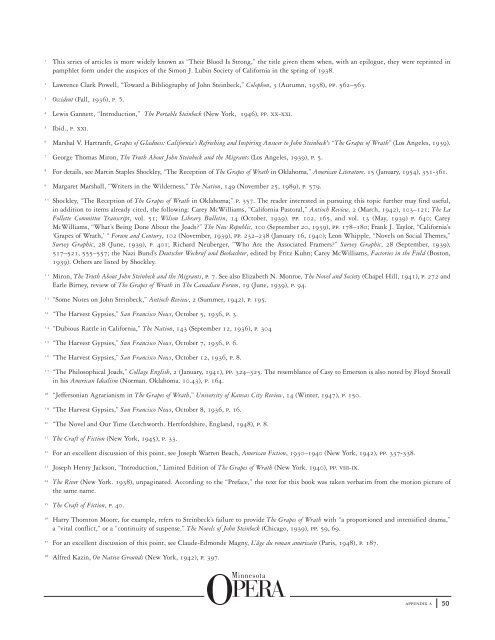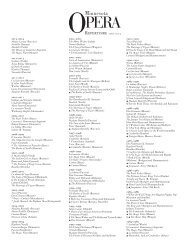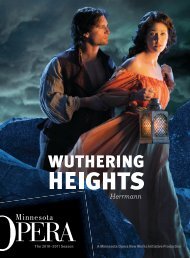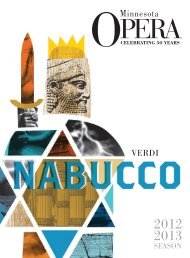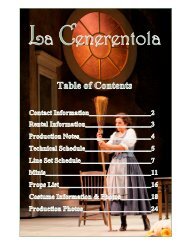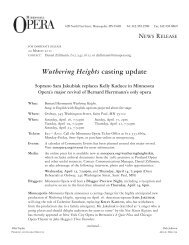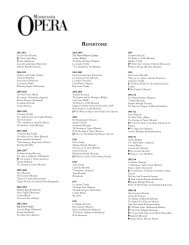You also want an ePaper? Increase the reach of your titles
YUMPU automatically turns print PDFs into web optimized ePapers that Google loves.
1<br />
This series of articles is more widely known as “Their Blood Is Strong,” the title given them when, with an epilogue, they were reprinted in<br />
pamphlet form under the auspices of the Simon J. Lubin Society of California in the spring of 1938.<br />
2<br />
Lawrence Clark Powell, “Toward a Bibliography of John Steinbeck,” Colophon, 3 (Autumn, 1938), pp. 562–563.<br />
3<br />
Occident (Fall, 1936), P. 5.<br />
4<br />
Lewis Gannett, “Introduction,” The Portable Steinbeck (New York, 1946), PP. XX-XXI.<br />
5<br />
Ibid., P. XXI.<br />
6<br />
Marshal V. Hartranft, <strong>Grapes</strong> of Gladness: California’s Refreshing and Inspiring Answer to John Steinbeck's “The <strong>Grapes</strong> of Wrath” (Los Angeles, 1939).<br />
7<br />
George Thomas Miron, The Truth About John Steinbeck and the Migrants (Los Angeles, 1939), p. 5.<br />
8<br />
For details, see Martin Staples Shockley, “The Reception of The <strong>Grapes</strong> of Wrath in Oklahoma,” American Literature, 15 (January, 1954), 351-361.<br />
9<br />
Margaret Marshall, “Writers in the Wilderness,” The Nation, 149 (November 25, 1989), p. 579.<br />
1 0<br />
Shockley, “The Reception of The <strong>Grapes</strong> of Wrath in Oklahoma;” p. 357. The reader interested in pursuing this topic further may find useful,<br />
in addition to items already cited, the following: Carey McWilliams, “California Pastoral,” Antioch Review, 2 (March, 1942), 103–121; The La<br />
Follette Committee Transcript, vol. 51; Wilson Library Bulletin, 14 (October, 1939). pp. 102, 165, and vol. 13 (May, 1939) p. 640; Carey<br />
McWilliams, “What’s Being Done About the Joads?” The New Republic, 100 (September 20, 1939), pp. 178–180; Frank J. Taylor, “California’s<br />
‘<strong>Grapes</strong> of Wrath,’ “ Forum and Century, 102 (November, 1939), pp. 232–238 (January 16, 1940); Leon Whipple, “Novels on Social Themes,”<br />
Survey Graphic, 28 (June, 1939), p. 401; Richard Neuberger, “Who Are the Associated Framers?” Survey Graphic, 28 (September, 1939),<br />
517–521, 555–557; the Nazi Bund’s Deutscher Weckruf und Beobachter, edited by Fritz Kuhn; Carey McWilliams, Factories in the Field (Boston,<br />
1939). Others are listed by Shockley.<br />
1 1<br />
Miron, The Truth About John Steinbeck and the Migrants, p. 7. See also Elizabeth N. Monroe, The Novel and Society (Chapel Hill, 1941), p. 272 and<br />
Earle Birney, review of The <strong>Grapes</strong> of Wrath in The Canadian Forum, 19 (June, 1939), p. 94.<br />
1 2<br />
“Some Notes on John Steinbeck,” Antioch Review, 2 (Summer, 1942), p. 195.<br />
13<br />
“The Harvest Gypsies,” San Francisco News, October 5, 1936, p. 3.<br />
1 4<br />
“Dubious Rattle in California,” The Nation, 143 (September 12, 1936), p. 304<br />
1 5<br />
“The Harvest Gypsies,” Sun Francisco News, October 7, 1936, p. 6.<br />
1 6<br />
“The Harvest Gypsies,” San Francisco News, October 12, 1936, p. 8.<br />
1 7<br />
“The Philosophical Joads,” Collage English, 2 (January, 1941), pp. 324–325. The resemblance of Casy to Emerson is also noted by Floyd Stovall<br />
in his American Idealism (Norman. Oklahoma. 10.43), p. 164.<br />
18<br />
“Jeffersonian Agrarianism in The <strong>Grapes</strong> of Wrath,” University of Kansas City Review, 14 (Winter, 1947), p. 150.<br />
1 9<br />
“The Harvest Gypsies,” Sun Francisco News, October 8, 1936, p. 16.<br />
20<br />
“The Novel and Our Time (Letchworth. Hertfordshire, England, 1948), p. 8.<br />
21<br />
The Craft of Fiction (New York, 1945), p. 33.<br />
22<br />
For an excellent discussion of this point, see Joseph Warren Beach, American Fiction, 1930–1940 (New York, 1942), pp. 337-338.<br />
23<br />
Joseph Henry Jackson, “Introduction,” Limited Edition of The <strong>Grapes</strong> of Wrath (New York. 1940), pp. viii-ix.<br />
24<br />
The River (New York. 1938), unpaginated. According to the “Preface,” the text for this book was taken verbatim from the motion picture of<br />
the same name.<br />
25<br />
The Craft of Fiction, p. 40.<br />
26<br />
Harry Thornton Moore, for example, refers to Steinbeck’s failure to provide The <strong>Grapes</strong> of Wrath with “a proportioned and intensified drama,”<br />
a “vital conflict,” or a “continuity of suspense.” The Novels of John Steinbeck (Chicago, 1939), pp. 59, 69.<br />
27<br />
For an excellent discussion of this point, see Claude-Edmonde Magny, L’âge du roman americain (Paris, 1948), p. 187.<br />
28<br />
Alfred Kazin, On Native Grounds (New York, 1942), p. 397.<br />
appendix a<br />
50


